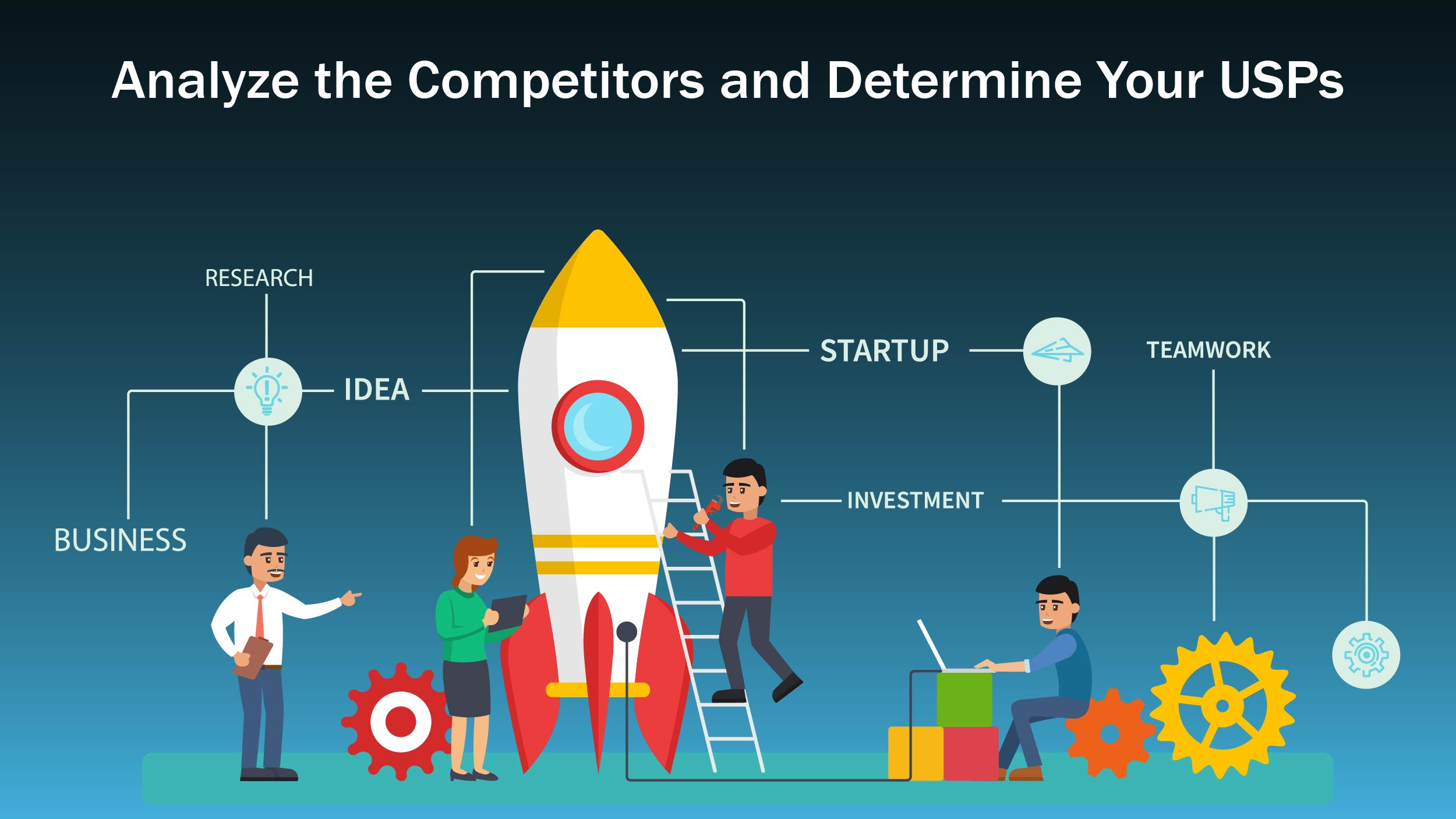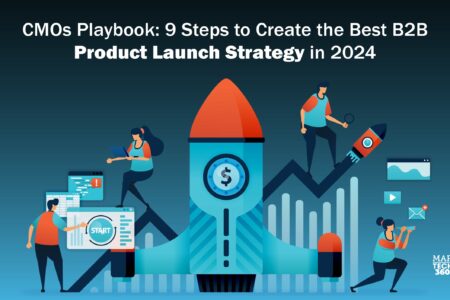B2B product marketing is an intricate process with a lot of factors that need to be taken into consideration to ensure success. Enterprises need to have the best brand positioning to showcase the appropriate value proposition of their product to the right target market. Additionally, pre-sales decision-makers need to make the right decisions while selecting the right channels to push their products.
Some B2B marketers find it difficult to understand their target audience, who is the right decision maker, and how to reach out to them. CMOs should consider developing the best B2B product launch strategy to increase their brand awareness and sales conversions. In this playbook, let us have a look at the crucial 9 steps to develop the best product launch strategy.
Also Read: Top 14 Content Syndication Tools To Maximize Your Reach And Engagement
A Step-by-Step Guide to Draft a B2B Product Launch Strategy
Following are a few steps that CMOs can consider to successfully launch a new product in the market:
1. Develop a Comprehensive Plan
Many marketers believe in shortcuts and ignore important components of a good marketing plan. It is crucial to be strategic while developing an effective product launch strategy that fits your business needs.
Marketers need to have a comprehensive understanding of their mission and goals. Moreover, defining what are the success metrics and other timelines will help determine the campaign’s success.
CMOs should consider drafting a B2B product launch roadmap that guides the pre-sales teams and stakeholders about the timelines. Setting specific, measurable, achievable, relevant, and time-based goals is the key to success.
2. Develop a Buyer Personas
A few marketers struggle to understand who their clients are, what their pain points are, and how the product can help them overcome the bottlenecks. CMOs are well-versed with their buyers, their pain points, and the solutions the client needs. Hence, creating a buyer’s persona is one of the most important steps in developing the best B2B product launch strategy.
Defining the buyer’s persona will help represent the target audience’s behavioral and demographic characteristics to the entire team. CMOs should consider developing personas that include information about the prospective buyer’s demographics, industry, and job description. It helps the entire team target the right people instead of interacting with a clientele that is more diverse than the ideal buyer’s persona. Targeting the ideal buyer’s persona will help increase the sales conversion rate as your product will solve specific bottlenecks in their operations.
3. Analyze the Competitors and Determine Your USPs

Based on the competitor analysis, CMOs should determine the differentiator product functionalities from the competitors that would streamline the clients’ work processes.
4. Develop a Cross-Functional Planning Team
A few enterprises consider product launches a task for the pre-sale teams. However, launching a new product to the market is not just a task of the marketing teams, but instead the entire organization.
Many businesses have reaped the benefits of including the entire organization to successfully launch new products to the market. Pre-sales, sales, after-sales, development, engineering, and legal departments should work together to achieve the desired goals.
Involving the entire team will allow the free flow of feedback in real time to make strategic changes in the marketing or product development strategy. Identifying and addressing challenges in the early stages will minimize future bottlenecks.
5. Develop an Effective Messaging Strategy
Once the marketing team has identified the unique differentiators or selling points and built an ideal buyer persona, they should draft a messaging strategy that targets the right audience with the right message at the right time. The messaging strategy of the B2B product launch should resonate with the target audience to make an impact. The channel used to deliver the message also plays an important role.
6. Select the Right Channels & Sales Models
Selling new B2B products can be difficult because of the immense competition. While designing a product launch strategy, CMOs need to determine the best sales model that fits their organization’s needs. It is crucial to have a clear understanding of whether they are going to sell directly to the end client or wholesalers in the chain or channel partners.
Profit margins can be calculated based on the most preferred channel. Technology and software companies that introduce a new B2B product can consider selecting the channel selling approach. The main reason behind selecting the channel approach is that it is simpler to partner with businesses that are already servicing the target market compared to building a new client base.
7. Integrate an Omni Channel Approach to Launch a New Product
The promotional mix of the product launch strategy will rely on factors such as the objective, marketing budgets, and the targeted personas. It is essential to determine on which channels the prospects spend most of their time. Facebook, LinkedIn, YouTube, Twitter, review sites, B2B media sites, and forums are a few popular channels among B2B decision-makers.
8. Launch the Product In Three Phases
The best product launch strategy will have three crucial phases: pre-launch, launch, and post-launch. In B2B product market introductions, pre-launch is the most important phase. This phase is essential to effectively make a list of distributors and buyer groups. The pre-sales, sales, and after-sales teams need to be trained in advance before the actual launch of the product.
It is a rare chance that the B2B product launch will happen as planned. B2B marketers always need to anticipate and stay prepared for last-minute changes to optimize the results.
Many businesses tend to ignore the post-launch phase. However, it will allow the teams to understand what possibilities can happen once the product is launched in the market. There is a tremendous amount of feedback that is passed during this phase, which is crucial for product enhancements.
9. Evaluate the Success to Make Data-Driven Changes
Once the businesses are done with any particular product launch campaign, they can evaluate the results. CMOs should determine the opportunities missed during the launch of the particular product. These opportunities can be seized in the next launch to improve the campaign outcomes.
In a Nutshell
B2B organizations that consider this playbook to draft their product launch strategy will significantly improve their chance of success. This strategy aligns the entire team toward success by avoiding potential bottlenecks in the early stages of launch. This 9-step playbook for CMOs to draft a successful product launch strategy will help create an impact on the right target audience at the right time with the right message to increase sales conversion.

